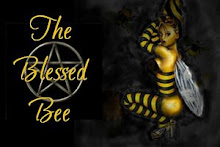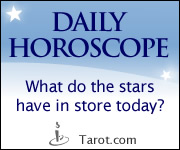There are approximately twelve centuries of recorded Hekate worship (from the eighth century BCE to the fourth century CE), including the original Greek contexts and the later Roman ones (when She, along with the rest of Greek religion, was appropriated by the Roman culture-builders).
Original images of Her indicate a Maiden goddess with "public displays of devotion...often for the common good of a community."
Later images of Her (particularly, though not exclusively, Roman) are negative portrayals (and certainly misogynist) of a Crone goddess with solitary, secretive, middle-of-the-night devotion by female practitioners of sorcery.
The original Greek images show Her to be a Maiden Goddess in the "earliest (and perhaps only indigenous) example of a triple-goddess involving Hekate. They represent the usual three stages of a woman's life that are found in Greek art: Maiden (Hekate), Bride (Persephone), and Mother (Demeter)."
She was a minor or secondary goddess who served "one or more of several specific functions, none of which were unique to Her":
Hekate Propylaia -- "the one before the gate" -- a guardian goddess whose statue was often at the entrance to major temples of other deities, primarily Demeter, or at the entrance to private homes.
Hekate Propolos -- "the attendant who leads" -- a personal attendant and guide, the most famous example of which is when She leads Persephone back to Demeter from the Underworld
Hekate Phosphoros -- "the light bringer" -- a torch-bearer (probably related to her role as guide, especially one who guides and attends initiates at the Mysteries, such as the Eleusinian Mysteries); while other deities carried a single torch, Hekate was most prominently associated with torch-bearing, and unlike the others, She usually carried two; though later sources identify Her as a moon goddess (and say the torches are a symbol of Her connection with night and the moonlight). Her early role as torch-bearer has no such connection, though they might refer to the Morning and Evening stars (Venus).
Hekate Kourotrophos -- "child's nurse" -- a title applied to nearly all Greek goddesses and to a few Greek gods; specifically applied to those who govern childbirth; it may refer to a maternal caring for all mortal beings and may possibly refer to caring for women specifically
Hekate Chthonia -- "of the Earth" -- according to the author, this is the most difficult to analyse; from my reading of Claude Levy-Strausse, I understand that chthonia in mythology points to Earth as Source, as Mother of all living, or to our earliest understandings of creation and creator
"The first three of these are Her most distinctive functions, and generally involve attending upon more prominent deities such as Demeter, Persephone, Artemis, and Kybele. Individually they are not unique to Her, but no other deity can claim all of them. The last two titles, on the other hand, are shared with numerous other deities. It does not seem possible to rank these functions as to their importance; different ones were emphasised at different times and locations."
From Albert Henrichs
"Hecate was a popular and ubiquitous goddess from the time of Hesiod until late antiquity...she emerges by the 5th cent. as a more sinister divine figure associated with magic and witchcraft, lunar lore and creatures of the night, dog sacrifices and illuminated caves, as well as doorways and crossroads."
From Hekate's History
"Hekate probably originated in the mythology of the Karians in southwest Asia Minor, and was integrated into Greek religion around the sixth century BCE. However, there is evidence that Hekate evolved from the Egyptian midwife goddess Heqit, (alternatively spelt 'Heket' or 'Hekat'.) The frog headed goddess Heqit assisted with the daily birth of the Sun and was associated with the apparently magical germination of the seemingly lifeless corn seed. In pre-dynastic Egypt the matriarch and wise woman of the tribe was called the 'heq'. It's interesting to note that Hekate is associated with childbirth."
From Hekate, Queen of Transition
"Hekate's symbols include the toad (conception), torches (guide), keys (gateways and transitions), snakes (guardian and underworld), dogs (guarding and hunting) and possibly owls (night and prophesy). The cypress tree is sacred to her as well."
Red Rover App
14 years ago










0 comments:
Post a Comment